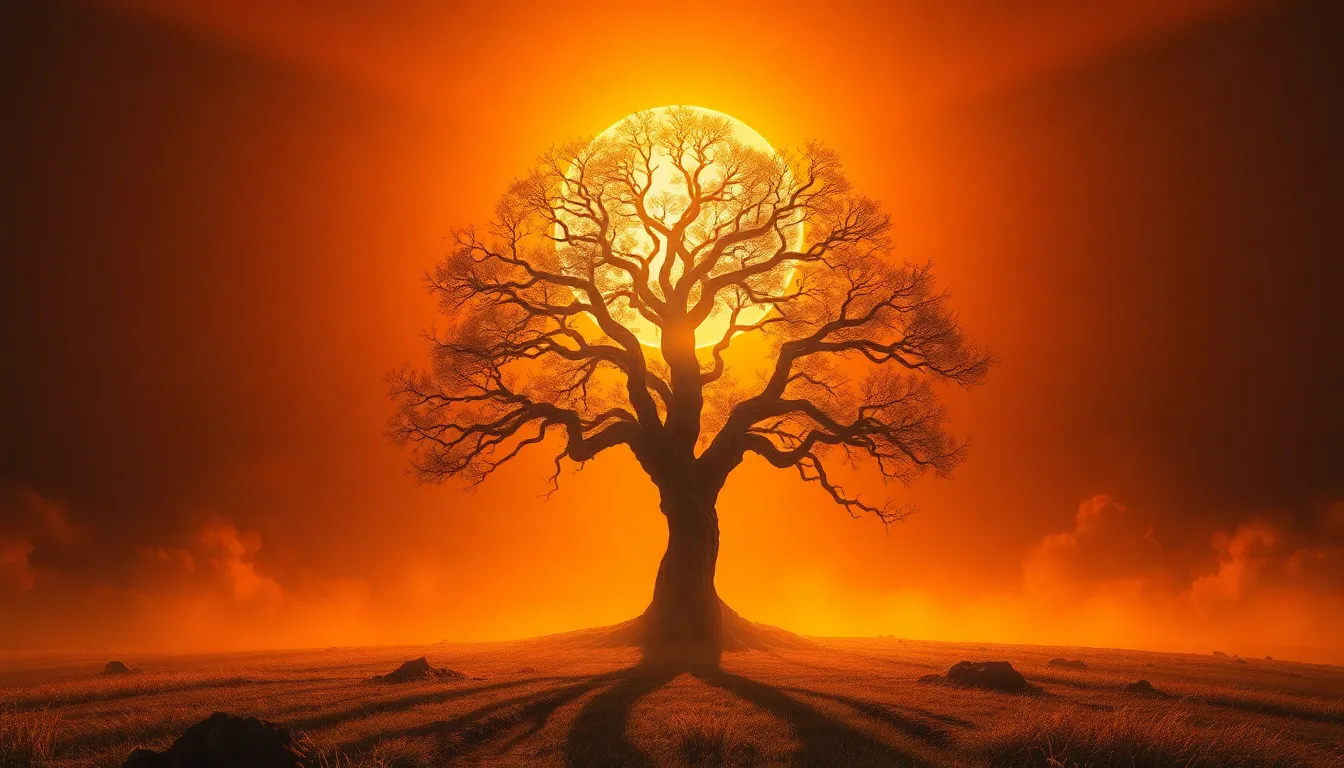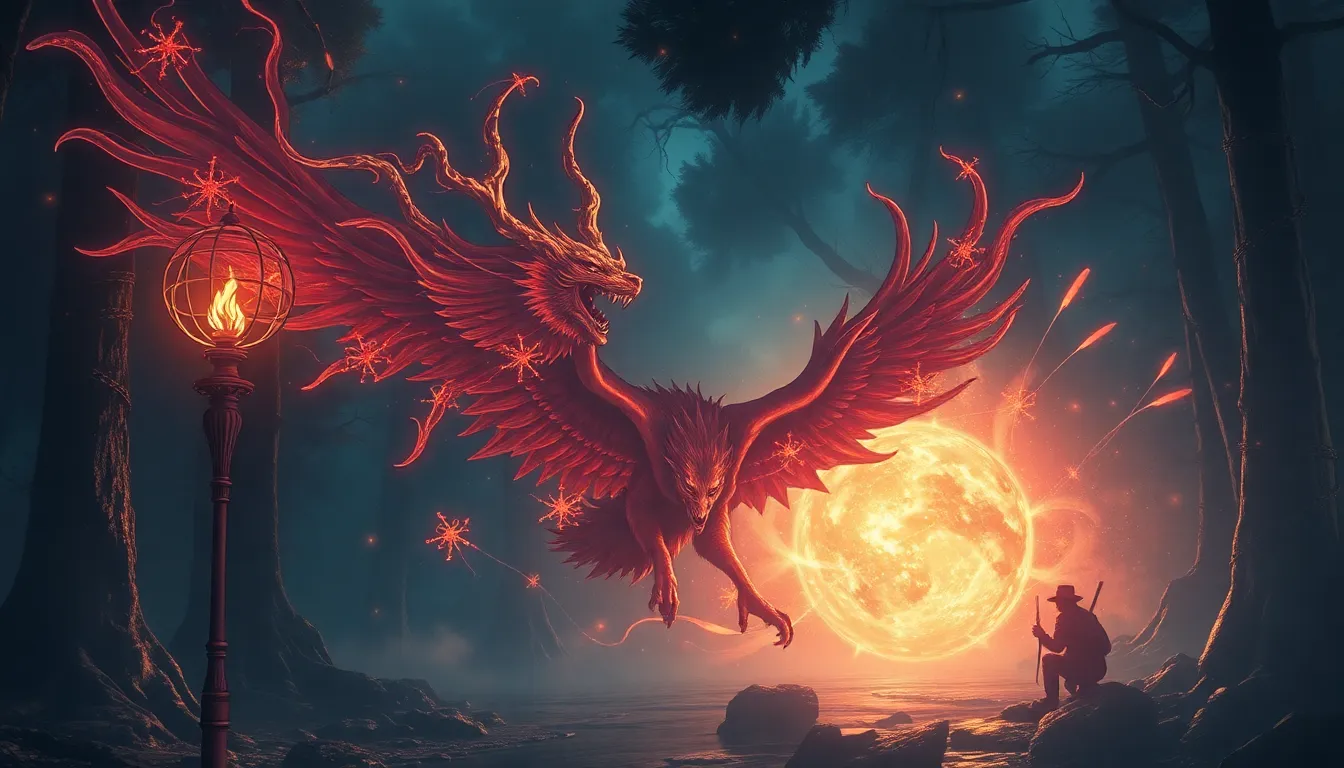The Tree of the Sun: Myths of Light and Life
I. Introduction to the Tree of the Sun
The Tree of the Sun is a powerful symbol found in various mythologies around the world, representing the connection between light, life, and the divine. It serves as a metaphor for growth, nourishment, and enlightenment. This article explores the significance of the Tree of the Sun, delving into the intertwined themes of light and life that permeate various myths and cultural narratives.
Throughout history, the sun has been revered as a source of vitality and energy, fostering life on Earth. The Tree of the Sun embodies these themes, acting as a connector between the celestial and terrestrial realms. The purpose of this article is to investigate the historical context, symbolic meanings, and artistic representations associated with the Tree of the Sun, highlighting its relevance in both ancient and modern cultures.
II. Historical Context of Solar Myths
A. Ancient civilizations and their reverence for the sun
From the Egyptians to the Aztecs, ancient civilizations held the sun in the highest regard, often personifying it as a deity. The sun was seen as a giver of life, with rituals and ceremonies dedicated to its worship. These cultures understood the sun’s crucial role in sustaining agricultural practices, which were vital for their survival.
B. The role of the sun in agricultural societies
Agricultural societies depended on the sun for the growth of crops and the sustenance of livestock. Seasonal changes dictated by the sun’s cycles influenced planting and harvesting times, making solar worship integral to these communities. As a result, the sun became a central figure in their mythology, often linked to fertility and abundance.
C. Overview of sun worship and its manifestations
Sun worship manifested in various ways, including:
- Temples and altars dedicated to sun deities.
- Festivals celebrating solstices and equinoxes.
- Artistic depictions of the sun in sculptures and paintings.
This reverence for the sun laid the groundwork for the emergence of the Tree of the Sun in mythology, symbolizing the life-giving energy of sunlight.
III. The Tree of Life in Global Mythologies
A. Comparison of the Tree of Life across cultures
The concept of the Tree of Life appears in many cultures, serving as a universal symbol of interconnectedness, growth, and immortality. While the specifics vary, the underlying theme remains consistent: the tree is a source of nourishment and life.
B. Symbolism of the Tree of Life in relation to the sun
In many traditions, the Tree of Life is closely associated with the sun. The leaves and fruits of the tree often symbolize the bounty provided by sunlight, while its roots connect to the Earth, illustrating the duality of existence.
C. Examples from different mythologies
Some notable examples include:
- Norse Mythology: Yggdrasil, the World Tree, connects the nine realms and is nourished by the sun.
- Mesopotamian Mythology: The sacred tree in the Epic of Gilgamesh represents eternal life and is often linked to the sun god.
- Hindu Mythology: The Ashvattha tree is seen as eternal and represents the cycle of life, with its branches reaching towards the heavens.
IV. The Sun as a Source of Light and Life
A. Scientific understanding of the sun’s role in supporting life
Scientifically, the sun is a vital source of energy that supports life on Earth through photosynthesis, allowing plants to create oxygen and food. Without the sun’s energy, life as we know it would not exist.
B. Mythological interpretations of the sun’s energy
Mythologically, the sun’s energy is often depicted as a force of creation and renewal. Many cultures attribute various characteristics to the sun, such as warmth, clarity, and illumination, symbolizing knowledge and enlightenment.
C. The sun as a metaphor for enlightenment and knowledge
The sun has long been a metaphor for enlightenment, representing the quest for knowledge and spiritual awakening. In many traditions, the journey towards wisdom is likened to moving from darkness into light, with the sun as a guiding force.
V. Creation Myths Involving the Tree of the Sun
A. Overview of creation stories featuring the Tree of the Sun
Creation myths that include the Tree of the Sun often depict it as a central figure in the formation of the world. These narratives illustrate themes of birth, growth, and the cyclical nature of existence.
B. Analysis of key figures and their roles in these myths
Key figures in these myths often include gods or celestial beings who interact with the Tree of the Sun, using its power to create life or bring about change. Their actions highlight the interconnectedness of all life and the importance of the sun in creation.
C. Themes of rebirth and regeneration associated with the tree
The Tree of the Sun frequently symbolizes rebirth and regeneration, reflecting the cycles of nature. This theme resonates with human experiences of growth, loss, and renewal.
VI. The Tree of the Sun in Folklore and Legends
A. Notable folktales and legends featuring the tree
Folklore often features stories about the Tree of the Sun, depicting it as a magical entity with the power to grant wishes or transform lives. These tales serve to convey moral lessons and cultural values.
B. Characters and their journeys connected to the tree’s symbolism
Characters in these stories often embark on quests that lead them to the Tree of the Sun, where they confront challenges and discover their true selves. The tree acts as a catalyst for their transformation.
C. Moral lessons derived from these stories
The moral lessons often emphasize the importance of harmony with nature, respect for life, and the pursuit of knowledge and truth. The Tree of the Sun becomes a symbol of hope and resilience.
VII. Artistic Representations of the Tree of the Sun
A. Visual art inspired by the Tree of the Sun
Artists have long drawn inspiration from the Tree of the Sun, creating works that reflect its beauty and symbolism. Paintings, sculptures, and installations often depict the tree as a vibrant, life-giving entity.
B. Literature and poetry that explore themes of light and life
Literature and poetry frequently explore the themes of light and life associated with the Tree of the Sun. Writers use this imagery to convey deeper truths about existence and the human experience.
C. Music and performance arts reflecting these myths
Music and performance arts also embrace the symbolism of the Tree of the Sun, using song and dance to tell stories of light, hope, and renewal. These expressions reinforce the tree’s significance in cultural narratives.
VIII. Modern Interpretations and Adaptations
A. Contemporary literature and films inspired by the mythology
Modern literature and films continue to draw on the mythology of the Tree of the Sun, reinterpreting its themes for contemporary audiences. These works explore the enduring relevance of ancient wisdom.
B. The Tree of the Sun in pop culture and its relevance today
In pop culture, the Tree of the Sun appears in various forms, from graphic novels to video games, symbolizing the intersection of nature and technology. Its presence resonates with current discussions on environmentalism and spirituality.
C. Eco-spiritual movements and their connection to ancient myths
Eco-spiritual movements often reference the Tree of the Sun as a symbol of interconnectedness and sustainability, advocating for a harmonious relationship with nature. These movements draw on ancient myths to inspire modern ecological practices.
IX. The Symbolism of the Tree of the Sun in Personal and Spiritual Growth
A. How the Tree of the Sun represents personal transformation
The Tree of the Sun symbolizes personal transformation, encouraging individuals to seek growth and enlightenment. Its imagery inspires people to reflect on their journeys, embracing change and renewal in their lives.



